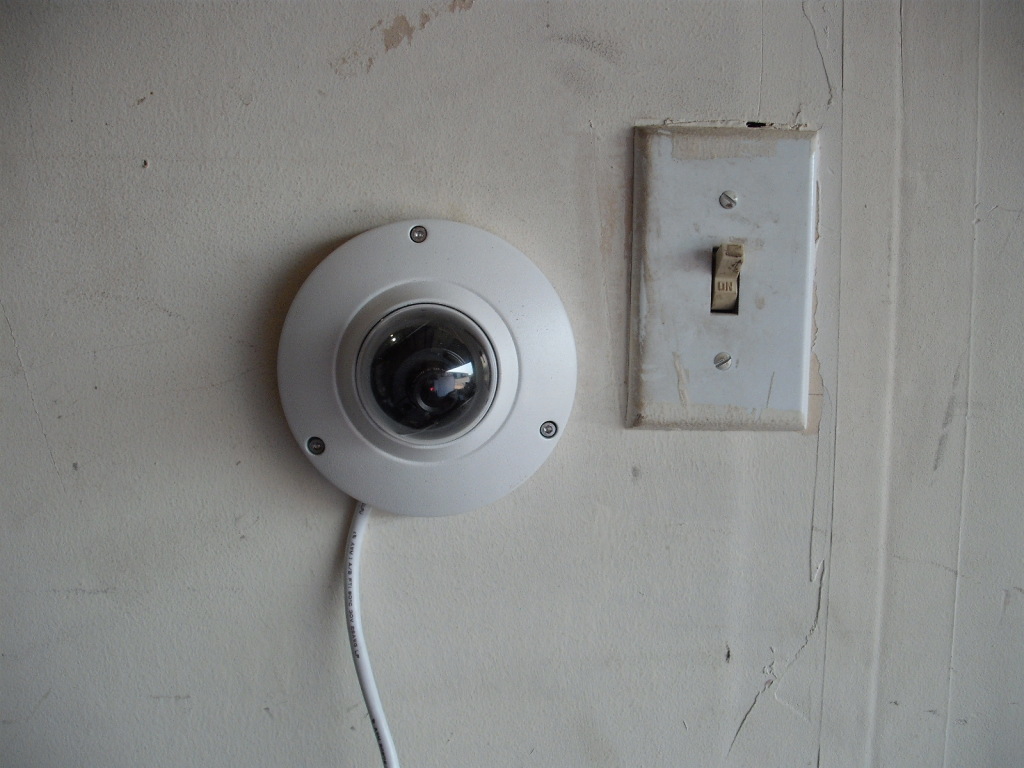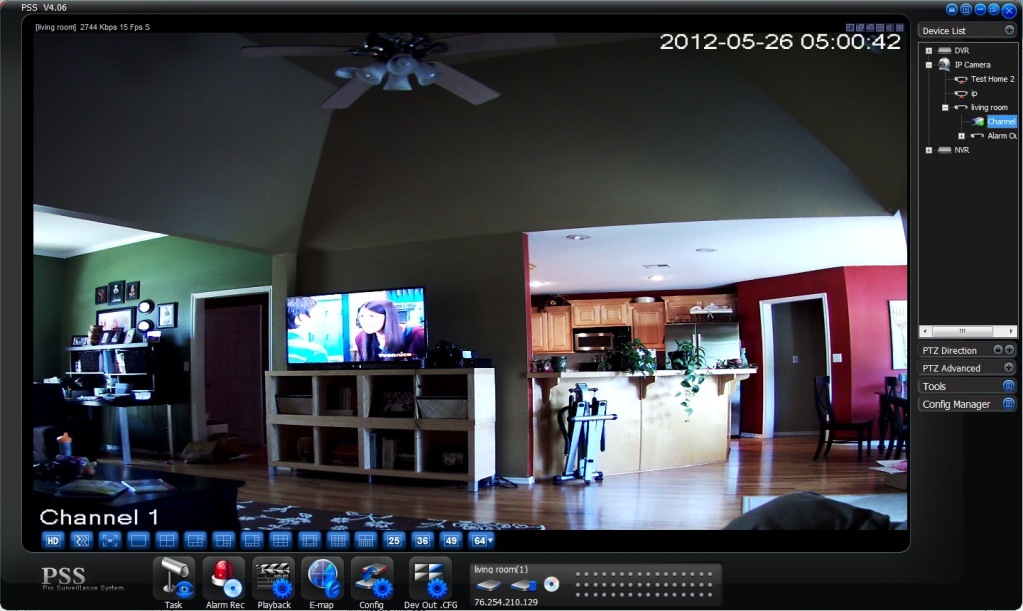

SEANHAWG
-
Content Count
1,814 -
Joined
-
Last visited
Posts posted by SEANHAWG
-
-
I think thats what he meant to say, but completely said something different.
-
Exacq does do server based motion motion detection.
They do? I thought I heard you say on the Avigilon chat that they dont.
-
And we are a professional CCTV Camera
I didnt know cameras could talk and type. Technology these days..............
-
I see, yeah I didnt even get into depth on the recording side, good to know, thanks for the review, thats why I wanted you to do it, so you could check out the details.
I will email Ken, looks like a pretty cool program.
-
I didnt have much of a problem with Axxon slowing down my computer, with Milestone on the other hand, it killed my computer. But now that you speak of blue-iris, I just downloaded it today and am trying to get the RTSP stream going, but the place where I put the RTSP stream doesnt make alot of sense to me. Basically this is the RTSP string I put in VLC to make it work in VLC
rtsp://admin:admin@192.168.1.108/cam/realmonitor?channel=1&subtype=1
Port 554 is for RTSP. What I dont get on Blue-Iris is there are a few different RTSP things to choose from and then there are several different fields to put stuff into.
Do you have any tips or can you give some screenshots on how you think the above string should be put into blue-iris. I have tried a few different ways but just cant get it to work.
**** edit: nevermind, I got it working on blue iris, just had to doctor up the string a little. Got it to work on our IP cams, but if I increase the frame rate, the video snags up quite a bit, if its 30FPS, the video just really slows down, its like its in slow motion, even in D1 resolution. Pretty cool little program though, Blue Iris that is. I was amazed at all the features for such a good price.
-
Technically, they are not rated for the low of a temperature, but they do produce alot of heat by just operating, but -35 is pretty darn cold. If my online conversion calculator is correct, that is -31 degree farenheit, that is freakishly cold. My suggestion is to move south (or north depending on where you live). Just kidding, unfortunately, I am not real sure how well they would hold up in that kind of temps, I just cant give a solid answer. A few degrees below 0, I dont see a problem, but that is well below 0. We have had alot of cameras rated at just 14 degrees farenheit (by the manufacturer) but have them deployed in several colder climates where it typically stays below 0 for a few months of the year and they work just fine. Sometimes these cameras produce so much heat that they get hot to the touch.
-
If its a standalone, more than likely no OS will be on there, just video files. If thats the case, just hook up a USB external hard drive and back that thang up. Its gonna take a while. Hopefully your DVR will support the external HD.
-
Have you already bought your cable? If not, just go with cat5e UTP. That will be just fine. Dont get the cheap copper clad cable though. Get the cable with solid copper conductors to be safe.
-
After much toying with RTSP stream, I got this to work in Aver. Seems to work best at 15 FPS, anything over that, the aver cant seem to handle it. Also, its best to keep the bit rate at 4Mbps or less, otherwise their is dropped frames if you increase it past that, seems the aver's processor just cant handle the extra bit rate. But at 15 FPS and 4Mbps, it looks pretty good.
-
Yeah I bet its just a fluke bad PSU. We still have alot of used Altronix power supplies from Walmart and even the used ones are solid as heck.
-
I already did again recently. I think you need to now.
-
I am going to play with RTSP stream again. I once had it working with Aver a while back. But either Aver's or this cameras firmware upgrade messed everything up. I'll have to see which one it was. I was going to do it today, but you know how that goes.........
-
A picture would be very helpful in seeing how it looks installed.Just for you Robert:

Installed in 2 seconds flat, literally. This is about the best I can do for now, until I get a real installation picture. But put it next to the light switch for size comaprison.
-
So is that the software you posted the screen shot of?Yep
-
<---- Basically, just like it looks on the ad on the left side of the page
Unfortunately, I dont have any installed here at my location, I just have them "propped up" with the dome glass cover off because I am constantly playing with it. I will try to get some installed pics from some customers. Its a real small dome so it fits well in most indoor or outdoor applications. Alot of people are amazed at how small it is. you can take a look at the unboxing video on the cameras tech page to see how small it is compared to my hand. I have PM'ed the link to the 2 requesting individuals.
-
So you have to use the client software as a client/server setup to access the video.No. You can use the Web GUI to see the live video. To see the previous recordings, you have to use the client software.
-
You use the PSS client software to connect to the IP camera. The IP camera acts as the sever:

-
I apologize if you were given misinformation or perhaps something was lost in translation, but just to clear things up:
- the client software that comes with the camera does allow you to see the extra stream. You can configure the camera and everything either from the client software or from the web interface
- The software that comes with it is a client software, not really a server NVR software, although it does have some server-like capabilties, which is it allows you to record to your PC, however, it does not allow you to remote into the software from an off-site computer or cell phone to view past recordings. The only exception to that is if you used something like logmein to remote into your PC, but thats really not truely remoting into the software. If you wanted to do that, then you would need to look into getting an NVR or a true NVR software such as Axxon or NUUO
- You can however remote directly into the camera from a remote computer or cell phone for live viewing
- Your other options in which you could do is stick an SD card in the camera and turn the camera into camera/recorder combo, in which you could remote directly into the camera and view previous recordings. however, you can only stick a maximum of 32GB micro SD in there. We are going to test a 64 GB micro SD card shortly and let you know the results. But if you need more space than that, then again, you would need to use either a standalone NVR or one of the recommend NVR softwares.
Hope this clears things up.
-
buy several dish network/direct tv satellites and DVR's
-
The blue thing is the IR filter
-
You have it on 2CIF. Change it to D1
-
To make a long story short, since you are only hooking up 2 PTZ's. Simply twist your2 positive communication wires and stick them in the A port. twist your 2 negative communication wires and stick them in the B port. Now lets just say for giggles that you have your PTZ's on channels 5 and 6 of the DVR. And lets also assume that both cameras are using Pelco D protocol with 2400 Baud (it doesnt have to be this, we are just assuming for example purposes). This is how you would set each camera:
Camera 5:
Pelco D
2400 Baud
Cam ID 001
Camera 6:
Pelco D
2400 baud
Cam ID 002
Make sure that both of your PTZ's have the same exact values as what your DVR is set at and your good to go. Those are the 3 crucial values. There are some other settings on the DVR that pertain to parity but just leave those at default settings.
-
I did a quick download and was able to connect with it via the Onvif driver. That is as far as I went with it though. I didnt dive into the program in depth.
-
Digital zoom is simply zooming in on pixels and blowing them up. With analog cameras, its not very effective.

I wonder how this will affect CCTV - 7Gbps wireless
in Test Bench
Posted
speaking of speed, someday super fast internet speed will be the norm and saving ip camera feeds to the cloud will be common, and then we will look back at these days and laugh and remember how limited we were by slow internet speeds. Hopefully in two years or so,